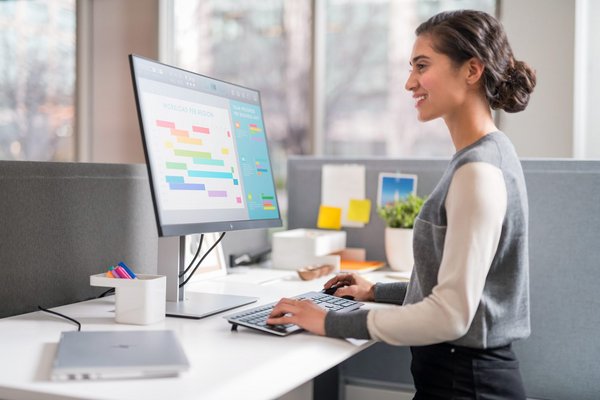TAIPEI, June 10, 2020 /PRNewswire/ -- Consumer electronic devices are developing at a rapid pace, and with that, low blue light technologies are also improving. People today use mobile phone and computer screens for excessive periods of time, causing dry eye syndrome. When used for long periods of time at a close range, the blue light emitted by LEDs will damage the cells of the retina, leading to difficulty sleeping or eye fatigue. Low blue light has therefore become a key issue in eye protection in recent years, and the new TUV Rheinland certification features improved design of LCD panels to provide more effective reduction of harmful blue light. HP is the first company to achieve the TUV Rheinland Low Blue Light (Hardware Solution) certification with its recently launched E-series monitors.

Eye protection technology can filter out blue light to different degrees using software or hardware correction. Software correction was used with many display devices in the past, but this tended to give the image a yellow tint. Advances in vendor technology and materials now enable the most harmful range of blue light frequencies to be filtered out directly through improved hardware, providing consumers with true protection.
A new generation of hardware low blue light testing technology has now been developed by TUV Rheinland for display devices. In addition to curbing the most harmful blue light frequencies and retaining only non-harmful blue light, wide color gamut testing has also been added to ensure that users can enjoy both low blue light for eye protection and vivid colors.
The new HP E-series monitors come with HP Eye Ease blue light filter technology at the hardware level without impacting color fidelity or creating a yellow tint. Testing by TUV Rheinland has found that because of technology improvements, this new generation of hardware low blue light monitors effectively reduce the amount of blue light by 41.7% while not shifting the color to yellow. The monitors are equipped with ergonomic features such as 150mm of height adjustment, tilting, and rotation to help users optimize their viewing comfort. Made from 85% recycled material, these HP monitors are also packaged with 100% recyclable packaging for an improved ease and rate of recycling.
TUV Rheinland is the current leader in the number of monitor certifications issued. We operate the greatest number of TCO-approved ergonomic labs in the world and have US EPA-accredited labs as well. In 2014, TUV Rheinland introduced the world's first low blue light safety testing standards for the display industry. Since that time it has pushed for continued improvements to the management of harmful blue light by the industry. A variety of monitor testing methods has also been developed by TUV Rheinland for eye safety issues, such as flicker free, anti-reflection, and anti-glare. These provide vendors and consumers with a way of quickly and easily identifying eye safe features through their certification marks.
TUV Rheinland certification means that a monitor has passed rigorous safety testing and can be purchased by consumers without fear. Monitors with hardware low blue light correction cost more to make. A product with the Low Blue Light mark label displaying hardware solution keywords suggests that it may offer better value than other monitors in its class. By putting consumer health first, TUV Rheinland provides consumers with a more comfortable viewing experience and more comprehensive eye protection.
Photo - https://photos.prnasia.com/prnh/20200610/2824910-1?lang=0